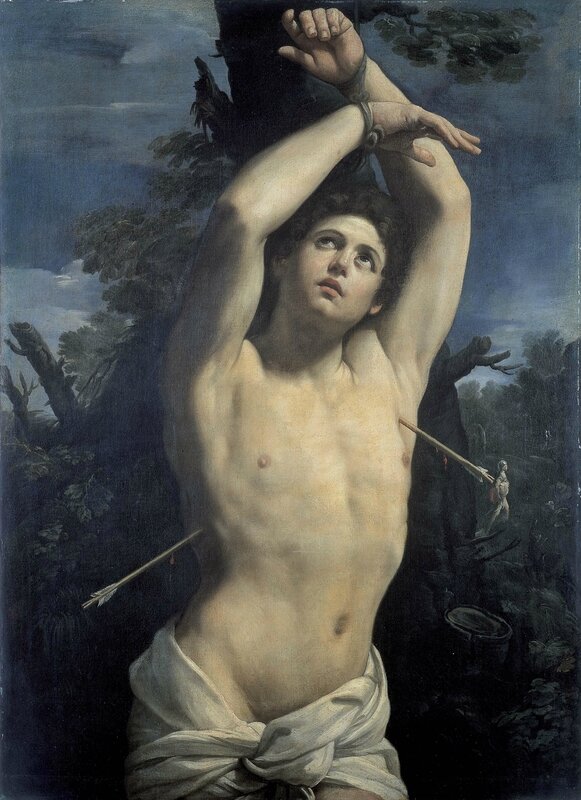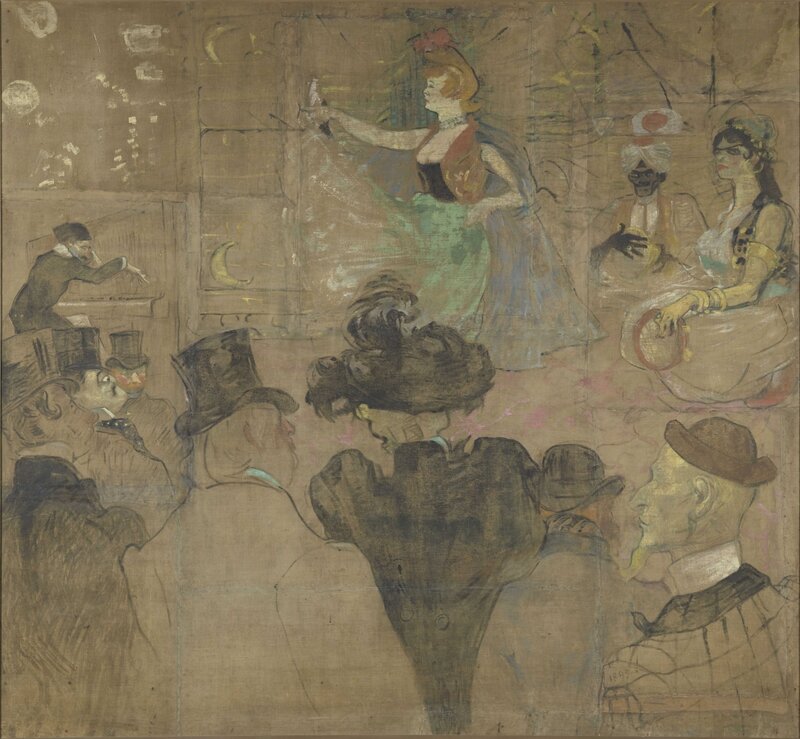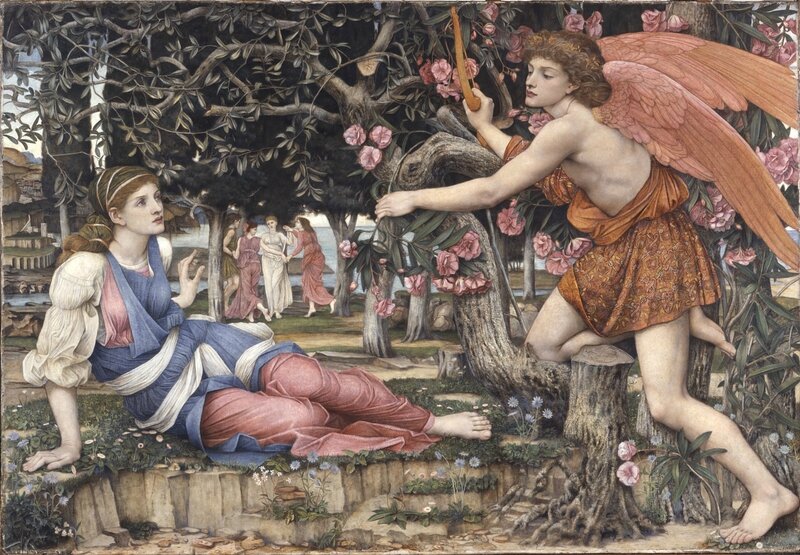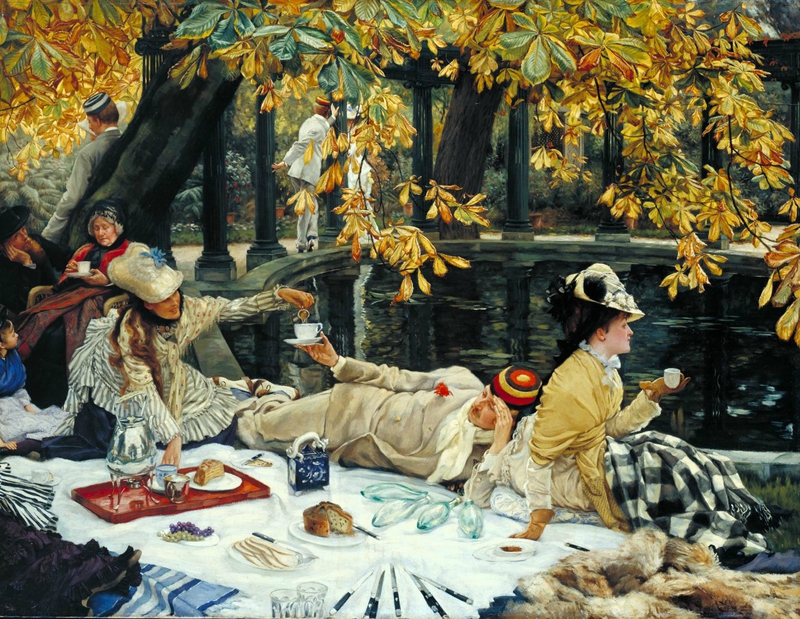"Oscar Wilde, l'impertinent absolu" au Musée du Petit Palais
Oscar Wilde, l'impertinent absolu : Affiche.
PARIS - Le Petit Palais est heureux de présenter la première grande exposition française consacrée au célèbre écrivain Oscar Wilde (né en 1854 à Dublin - mort en 1900 à Paris). En effet, bien que l’auteur soit mort dans la capitale, le centenaire de sa disparition n’ y a pas été commémoré, alors que Londres lui consacrait deux grandes expositions en cette année 2000, l’une à la British Library, essentiellement littéraire et biographique, l’autre au Barbican Center autour des rapports de Wilde avec les artistes de son époque. Pour cette grande première, le Petit Palais retracera la vie et l’œuvre de ce parfait francophone et ardent francophile à travers un ensemble de plus de 200 pièces rassemblant documents exceptionnels, inédits pour certains, manuscrits, photographies, dessins, caricatures, effets personnels, et tableaux empruntés en Irlande et en Angleterre bien sûr, mais aussi aux Etats-Unis, au Canada, en Italie, dans les musées français (musée d’Orsay, BnF...) et dans différentes collections privées.
Napoleon Sarony (1821-1896), Portrait d’Oscar Wilde #15, 1882. © Bibliothèque du Congrès, Washington.
Il était donc bien naturel pour Paris d’accueillir une exposition cé- lèbrant Oscar Wilde tant ce dernier tissa des liens multiples et féconds avec de nombreux représentants de la scène artistique et du milieu intellectuel parisien à la fin du XIXe . En effet, Wilde fit de nombreux séjours à Paris entre 1883 et 1894 et fut ami avec plusieurs écrivains français, tels André Gide et Pierre Louÿs. Il fréquenta Mallarmé, Verlaine et même Victor Hugo. Wilde écrivit directement en français sa pièce de théâtre Salomé dont il destinait le rôle-titre à Sarah Bernhardt. Et c’est enfin à Paris qu’en 1900 il mourut dans le dénuement et la misère après sa condamnation en 1895 à Londres pour homosexualité. Son tombeau, surmonté d’une sculpture de Jacob Epstein est situé au cimetière du Père Lachaise. La partie biographique de l’exposition présentera un caractère inédit en réunissant plusieurs portraits jamais vus ensemble jusqu’ici, notamment celui peint par Harper Pennington (UCLA, William Andrews Clark Memorial Library, Los Angeles). De même, la présentation conjointe de 13 tirages photographiques originaux de portraits réalisés par Napoleon Sarony, pendant la tournée américaine de Wilde, sera une première.
Napoleon Sarony, Portrait d’Oscar Wilde #22, 1882. © Bibliothèque du Congrès, Washington.
Mais on retrouvera aussi des portraits célèbres ou inattendus comme celui peint par Toulouse-Lautrec qui l’a représenté de dos sur le décor de la baraque de la Goulue, au premier plan à gauche de La Danse mauresque (musée d’Orsay).
Divers portraits de parents, d’amis et de familiers (sa femme Constance, Lord Alfred Douglas…) permettront d’évoquer sa vie personnelle, complétés par quelques memorabilia et plusieurs dessins et aquarelles, paysages et portraits réalisés par Oscar Wilde lui-même.
L’exposition comportera bien sûr les manuscrits des œuvres les plus importantes de l’écrivain ainsi que des exemplaires de ses livres dédicacés à des auteurs français et diverses correspondances. L’accent sera mis notamment sur Salomé, publié en français en 1893 et ses fameuses illustrations par Beardsley.
Napoleon Sarony, Portrait d’ Oscar Wilde #26, 1882. © Bibliothèque du Congrès, Washington.
Afin de donner un aspect visuel fort à l’accrochage au-delà des vitrines de manuscrits, l’exposition regroupera un choix de tableaux préraphaélites montrés à la Grosvenor Gallery de Londres en 1877 et 1879 et qui suscitèrent d’abondants commentaires de Wilde, critique d’art, où l’on retrouvera les noms de Watts, Millais, Hunt, Crane, Tissot, Stanhope... Le parcours sera également ponctué d’extraits de films mémorables, d’interviews de Merlin Holland, petit-fils d’Oscar Wilde, et de Robert Badinter, auteur de la pièce C.3.3. consacrée au procès et à l’incarcération d’Oscar Wilde, et d’enregistrements de textes lus par l’acteur britannique Rupert Everett.
Enfin, l’exposition sera enrichie d’une application mobile, à la fois guide de visite et catalogue numé- rique. Le parcours de l’exposition sera composé de 25 points d’intérêts, avec des commentaires audio des deux commissaires et d’images en haute définition. Le catalogue numérique quant à lui aura pour objectif de faire découvrir Wilde et son influence par différentes entrées : une chronologie, une mappemonde, ou encore un abécédaire. Il reprendra également les interviews filmées présentées dans l’exposition.
Musée du Petit Palais - du 28 septembre 2016 au 15 janvier 2017
Harper Pennington (1854-1920), Portrait d’Oscar Wilde, 1884. © The William Andrews Clark Memorial Library - University of California, Los Angeles.
PARIS.- The Petit Palais is presenting the first major exhibition in France devoted to the famous writer Oscar Wilde (Dublin 1854 – Paris 1900). Although Wilde died in the French capital, the centenary of his death was not celebrated here; London, on the contrary, honoured him with two large-scale exhibitions in 2000, one – mainly literary and biographical – at the British Library, and the other at the Barbican Centre, focusing on his connections with the artists of his time.
For this landmark event the Petit Palais retraces the life and work of this ardent francophile and speaker of perfect French through more than 200 remarkable exhibits, some never shown before: manuscripts, photographs, drawings, caricatures and personal effects; as well as paintings borrowed not only from Ireland and England, but also from the United States, Canada and Italy, from French institutions including the Musée d’Orsay and the Bibliothèque Nationale de France, and from various private collections.
The Cameron Studio, Portrait de Constance et Cyril Wilde, 1889. © Collection Merlin Holland.
It was only natural that Paris should ultimately host an exhibition like this one, given Wilde’s creative links with a host of leading figures on the artistic and intellectual scenes in late 19th-century Paris. He made frequent stays in the city between 1883 and 1894 and counted among his writer friends André Gide, Pierre Louÿs, Stéphane Mallarmé, Paul Verlaine and even met Victor Hugo. He wrote his play Salomé originally in French, with Sarah Bernhardt in mind for the title role. Wilde would die, wretchedly poor, in Paris in 1900, after his conviction for homosexuality in London five years before; his tomb in Père Lachaise cemetery is topped with a sculpture by Jacob Epstein. The biographical element of the exhibition is uniquely innovative in bringing together a number of painted portraits for the first time, in particular the one by Harper Pennington (William Andrews Clark Memorial Library, UCLA, Los Angeles). A further world premiere is the first-ever group showing of 13 of the original oversize photo-portraits taken by Napoleon Sarony during Wilde’s tour of America in 1882.
Guido Reni, Saint Sebastien, v. 1616. Musei di Strada Nuova Palazzo Rosso, Gênes. © Musei di Srada Nuova.
These portraits are complemented by others, both famous and unexpected: Wilde in back view, for example, in the left foreground of Toulouse-Lautrec’s La Danse mauresque (Musée d’Orsay), painted as part of the set at the Baraque de la Goulue cabaret.
Portraits of Wilde’s family and friends, among them his wife Constance and Lord Alfred Douglas, offer an insight into his personal life, together with various memorabilia and drawings, watercolours, landscapes and portraits by Wilde himself.
Needless to say the exhibition also includes his most significant manuscripts, copies of books inscribed to French writers and samples of his correspondence. Special attention has been given to Salomé, published in French in 1893, with its celebrated illustrations by Aubrey Beardsley and the Petit Palais is showing two of the original artworks.
Henri de Toulouse-Lautrec, La Danse mauresque, 1895. Panneau pour la baraque de la Goulue, à la Foire du Trône à Paris. © RMN-Grand Palais (musée d’Orsay) /Hervé Lewandowski.
In addition to showcases displaying the books and manuscripts, the exhibition has been visually enhanced by a selection of Pre-Raphaelite pictures – by Watts, Millais, Hunt, Crane, Tissot, Stanhope and others – shown at the Grosvenor Gallery in London in 1877 and 1879 and extensively written about by Wilde in his role as art critic. At different points visitors also are offered excerpts from historic films, from interviews with Wilde’s grandson Merlin Holland and Robert Badinter, author of the play C. 3. 3. – an account of Wilde’s trial and imprisonment – and from recordings of Wilde’s works read by English actor Rupert Everett. A further feature is a mobile phone application serving as a guide and digital catalogue. The application divides the exhibition itinerary into 25 segments, with audio commentary by the two curators and high-definition images. The digital catalogue helps the visitor to discover the writer and his influence from different angles: via a timeline, a map of the world and an Oscar Wilde primer. It also includes the filmed interviews.
Evelyn Pickering (De Morgan) (1855-1919), La Nuit et le Sommeil, 1878. © De Morgan Foundation.
John Roddam Spencer Stanhope (1829-1908), L’Amour et la jeune fille, 1877. © Fine Arts museum de San Francisco. Achat du musée, du European Art Trust Fund, du Grover A. Magnin Besquest Fund and du Dorothy Spreckels Munn Bequest Fund.
Sir William Blake Richmond, Electre sur la tombe d’Agamemnon, 1874. © 2016 Art Gallery of Ontario
John Singer Sargent (1856-1925), Ellen Terry en Lady Macbeth, 1889. Tate Britain, Londres. © Tate, London 2016
Walter Crane (1845-1915), La naissance de Vénus, 1877. Tate britain, Londres. © Tate, London 2016
James Tissot (1836-1902), Les vacances, 1876. Tate Britain, Londres. © Tate, London 2016
Aubrey Beardsley, J’ai baisé ta bouche Iokanaan, The Studio, n°1, avril 1893. Collection Merlin Holland.
Tombeau d’Oscar Wilde au cimetière du père Lachaise par Jacob Epstein. Collection Merlin Holland. © The Estate of Sir Jacob Epstein

/https%3A%2F%2Fprofilepics.canalblog.com%2Fprofilepics%2F1%2F0%2F100183.jpg)
/https%3A%2F%2Fstorage.canalblog.com%2F03%2F02%2F119589%2F96711876_o.jpg)
/https%3A%2F%2Fstorage.canalblog.com%2F11%2F31%2F119589%2F94773502_o.jpg)
/https%3A%2F%2Fstorage.canalblog.com%2F20%2F83%2F119589%2F94772815_o.jpg)
/https%3A%2F%2Fstorage.canalblog.com%2F26%2F72%2F119589%2F75604929_o.jpg)
/https%3A%2F%2Fstorage.canalblog.com%2F59%2F60%2F119589%2F26458628_o.jpg)


















/http%3A%2F%2Fstorage.canalblog.com%2F61%2F53%2F119589%2F128344677_o.jpg)
/http%3A%2F%2Fstorage.canalblog.com%2F19%2F23%2F119589%2F128179837_o.jpg)
/http%3A%2F%2Fstorage.canalblog.com%2F32%2F55%2F119589%2F120504105_o.jpg)
/http%3A%2F%2Fstorage.canalblog.com%2F40%2F86%2F119589%2F116332829_o.jpg)